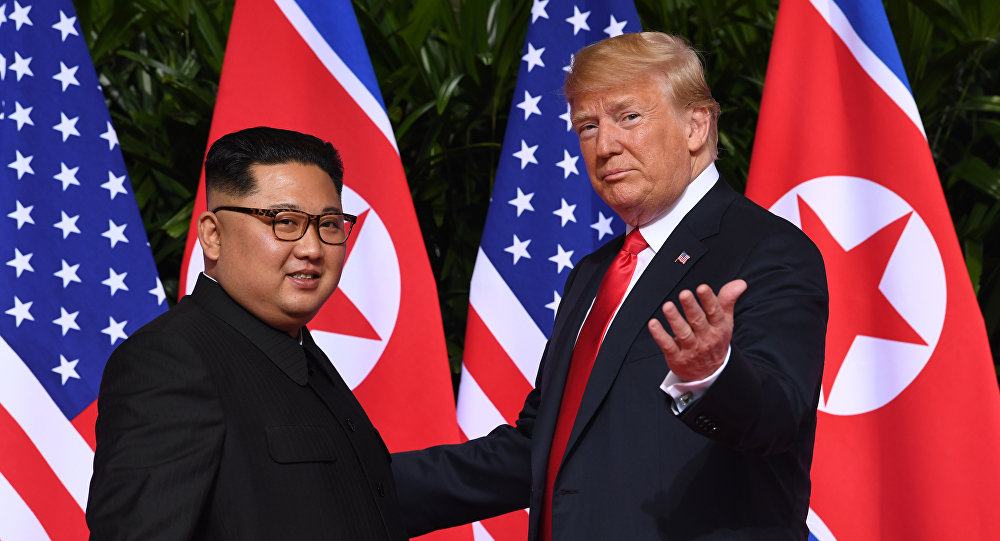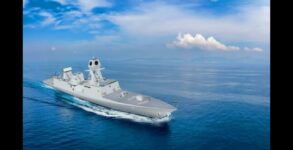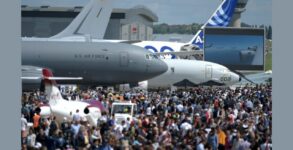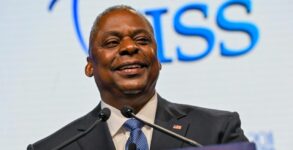US President Donald Trump will hold second summit-level meet with North Korean leader Kim Jong-un in not “very distant time” and this has been broadly conveyed by the American President himself during a meeting with South Korean President Moon Jae-in on the sidelines of UN General Assembly in New York recently. The first US-North Korea summit was held in Singapore on June 12. Since then thousands of litres of water have flowed down the bridges of the two countries’ rivers. But a crucial change in their behaviour towards each other came after North Korea’s Kim wrote a letter to President Trump on September 10; information regarding this was passed on to journalists by White House press secretary Sarah Huckabee Sanders recently.
Though details of Kim’s letter were not publicized by the White House, it markedly reflected fast geo-political development of the Korean Peninsula. In fact, denuclearization received a momentum in the region once again after a third meeting between North Korean leader Kim and South Korean President Moon Jae-in in Pyongyang on September 18. Various reports suggest that North Korea retains an estimated 20 to 60 nuclear warheads and there are facilities to produce more.
But the South Korean President, using his personal charm and negotiating skills that he learnt during his previous stint as a chief of staff of former South Korean President Roh Moo-hyun, persuaded the North Korean leader to move the ball forward on the denuclearization front. However, Kim agreed to dismantle a key missile test facility at Tongchang-ri in the presence of international experts and also destroy its Yongbyon-based nuclear unit provided the US takes similar measures. With this, though, Kim shifted the ball in the US’ court, it paved the way for further negotiations between the two countries. Brimming with optimism, while US President Trump acknowledged that he saw “tremendous enthusiasm on behalf of Chairman Kim for making a deal,” he gave no answer as to what roadmap he would undertake to resolve jigsaw puzzle of the Korean nuclear issue.
As a matter of fact, any North Korean agreement to dismantle nuclear programme involves several gives and takes. Withdrawal of 28,000 US troops from South Korea is one of the key demands of North Korea. Then Pyongyang has been demanding formal declaration of security assurance to the Kim regime. It has also been seeking removal of crippling US and international sanctions imposed on it. While the Trump administration may agree with the second condition, it has already made it clear that demands for withdrawal of troops and relief from sanctions remain too early to be fulfilled. “Now is not the time to ease pressure,” US Secretary of State Mike Pompeo said recently.
Who wants to be Kim Jong-un’s brother-in-law?
Still, the US President and the North Korean leader—who have developed liking for each other—have voiced support for a second meeting where in all likelihood these issues will be taken up. But then credit goes to South Korean President Moon Jae-in who worked hard to bring the two leaders back to the negotiating table. He knew that peace is pricy and, as such to make things move smoothly, he avoided doing anything that could derail his plan for the two Koreas which ended their bloody wars after armistice was brought in place in 1953. In fact, to nudge mercurial Kim to see brighter side of peace in the region, he met the North Korean leader thrice since April and the last one in September in Pyongyang. Interestingly, it was 11 years ago the leaders of the two countries had held their meeting in North Korea where Moon Jae during his current visit took along a huge business delegation that included Samsung’s vice chairman Lee Jae-yong. Some analysts say the South Korean President’s dream of reconciling the rival Koreas is personal; he was born in a refugee camp to parents who fled the North during the war. That was the reason when the South Korean addressed a gathering at a Pyongyang stadium filled with 150,000 cheering North Koreans, he stressed on common prosperity and bringing of a new era of peace in the region. It is rightly said that if Moon Jae-in remains successful in his efforts, not only his popularity graph which is currently down because of his failure to strengthen economy and generate promised number of jobs for South Korean youths, will jump, but also he could be nominated for Nobel peace prize.
In the whole game of peace and reunion efforts surrounding the Korean Peninsula, there is a danger for Japan; it is going to be left behind and for this, incidents of past are cited as the reason. Under Japanese colonial rule in the decades before the World War II, Koreans suffered hugely. Koreans don’t want to forget that chapter of their past sufferings at the hands of Japanese. Tokyo is quite aware of presence of deep rooted hatred among Koreans towards Japanese. And it was the reason, the Japanese media reacted coolly to the jubilant mood that graced the summit between South Korean President Moon Jae-in and North Korean leader Kim recently. Japanese daily Nikkei penned a worse-case scenario in which Pyongyang gives up its intercontinental ballistic missiles, but retains some to target Japan. Therefore, it would not be surprising to find that Japan which last year, stood side by side with the US in insisting on maximum pressure on North Korea until Pyongyang surrenders its nuclear weapon programme, comes with the same set of arguments in the coming days again.


















